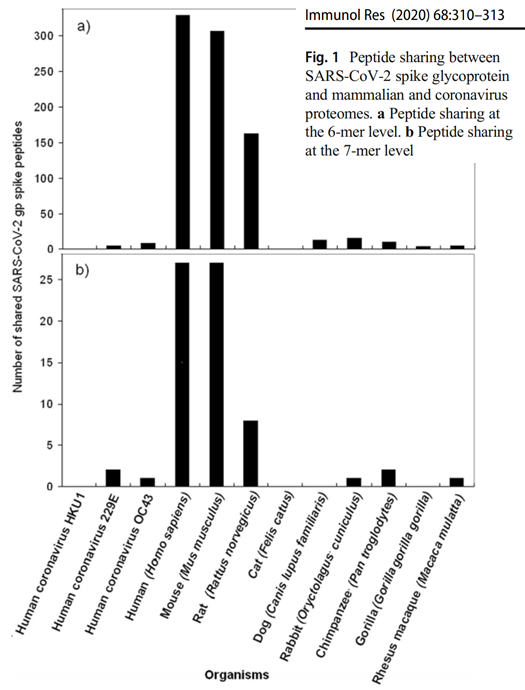
1/ I feel there are still some important points to make about this question of whether and how quickly Covid will become like a common cold
2/ The first point is CoV-2 is a respiratory virus. It spreads straight from your nose and throat to mine. This is a very distinct group of viruses with something surprising (and, really, unexplained) in common – the illnesses they cause are much more common in cold weather.
3/ They’re also mild in the vast majority of cases – so CoV-2 will be very unusual if it remains as pathogenic as this for long. (Though of course rhinovirus, adenovirus, parainfluenza etc regularly hospitalize children and others 👇) 

4/ I think everyone agrees that we need to think about the “trade-off” model of the evolution of parasites: short-sighted selection says that the virus would become super-virulent. However long-sighted selection says it won’t be transmitted well if it’s *too* virulent.
5/ (As an example of trade-off in action, why are colds so such much more common than Ebola, Marburg & Lassa viral hemmorhagic fevers, which can all spread from person to person? Something either stops VHFs or makes them mild over time.)
6/ (Just as well, or complex life-forms might well be impossible.)
So clearly selection is reducing pathogenicity, at least in the extreme cases.
So clearly selection is reducing pathogenicity, at least in the extreme cases.
7/ Scientists talking about trade-off often say “if a virus is too virulent, it may kill its host too quickly”
True, but trade-off isn’t only or mainly about death. For viruses such as CoV-2 that AREN'T spread by insects etc, a crucial question is whether *mobility* is reduced.
True, but trade-off isn’t only or mainly about death. For viruses such as CoV-2 that AREN'T spread by insects etc, a crucial question is whether *mobility* is reduced.
8/ (Ewald, 1985, pointed out that viruses that are spread by vectors tend to be more virulent, p < 0.0005. He suggests that for them it doesn’t matter much whether the host moves around because the vectors can come to the host. doi.org/10.1146/annure…)
9/ So respiratory viruses need to both reduce their virulence, & have long incubation periods, so that their hosts remain infectious for longer
Since most resp viruses are mild, seems that (fortunately for us) a long incubation period IS correlated with mild symptoms in respvirs
Since most resp viruses are mild, seems that (fortunately for us) a long incubation period IS correlated with mild symptoms in respvirs
10/ People often point out that other endemic viruses such as measles and smallpox remain virulent and have not become as mild as colds.
11/ However measles and smallpox occupy a different niche: they go through the lymphatic system, before getting into the blood. This probably slows them up and makes their hosts infectious for longer. 

12/ Timing: so when will CoV-2 become like a common cold?
We don’t know but there are clues: the first is the autumn surge of colds, which is very common, shown below 👇
The highest number of colds all year can appear in early autumn – which is certainly not the coldest season
We don’t know but there are clues: the first is the autumn surge of colds, which is very common, shown below 👇
The highest number of colds all year can appear in early autumn – which is certainly not the coldest season

13/ The only reasonable explanation of this autumn surge that I know of – which is falsifiable – is that these viruses have adapted to the high summer temperatures, and they get “caught out” by a drop of a few degrees in autumn.
14/ So it seems viral pathogenicity can significantly adapt over a few months. Similarly, viral strains that come from the Tropics seem to become mild in a few months. See our paper for details
doi.org/10.1002/rmv.22…
doi.org/10.1002/rmv.22…
15/ So why isn’t CoV-2 already noticeably milder?
Here I want to have my argumentative cake & eat it by saying our interventions may possibly have slowed up up attenuation. Eg we may have enforced the wrong kind of track & trace:
Here I want to have my argumentative cake & eat it by saying our interventions may possibly have slowed up up attenuation. Eg we may have enforced the wrong kind of track & trace:
16/ our relatively slow track & trace could have stopped the slow-burning, asymptomatic or mild strains, but allowed the more aggressive, fast-acting ones to proliferate. Could we have accidentally made things much worse?
17/ After all, 70% of respiratory viruses detected by Galanti and colleagues by multiplex PCR in New York City were asymptomatic (including influenza at ~50%) 👇doi.org/10.1017/S09502…
18/ Letting mild and asymptomatic infections spread could be very important in moderating this disease. In fact yuou could argue that only symptomatic people should take tests
19/ All fascinating !
Of course much of this is speculative, but most of it is falsifiable
So, what we need, urgently, are experiments
Of course much of this is speculative, but most of it is falsifiable
So, what we need, urgently, are experiments
The point about fast and slow strains came up with reference to Omicron in South Africa
https://twitter.com/PatrickSSte/status/1469990017254711300
• • •
Missing some Tweet in this thread? You can try to
force a refresh









